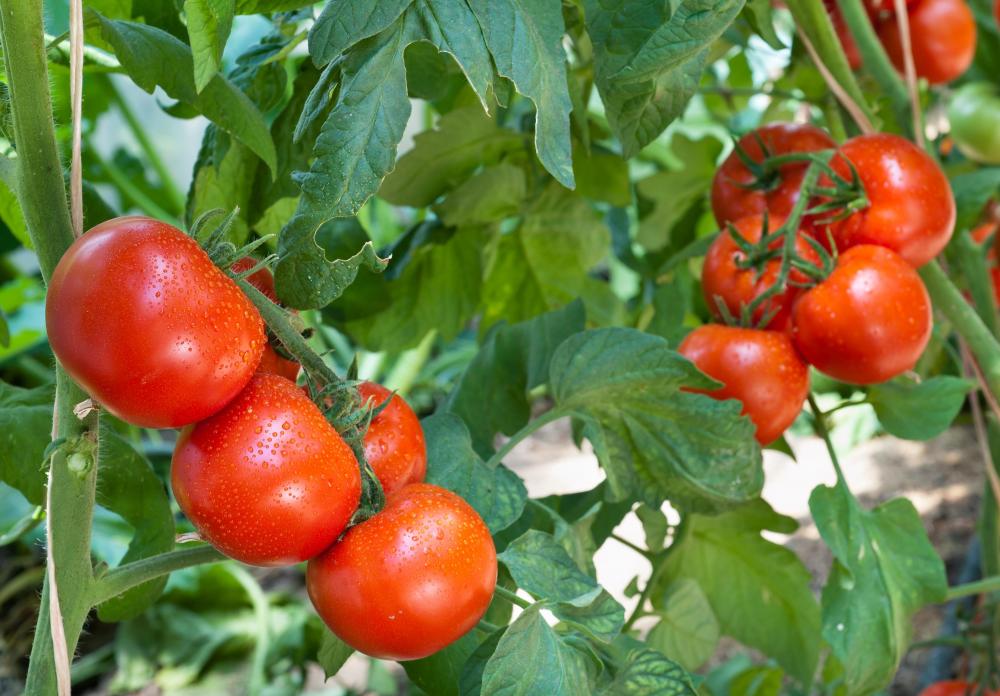At WiseGEEK, we're committed to delivering accurate, trustworthy information. Our expert-authored content is rigorously fact-checked and sourced from credible authorities. Discover how we uphold the highest standards in providing you with reliable knowledge.
What Are the Best Tips for Making Pasta Sauces?
Pasta sauces, often called gravies outside of the United States, can vary from white to red, light to heavy, and meaty to vegetarian. Some tips for making the perfect noodle-topping apply to only the sauce, while others dictate the type of pasta as well. While fresh ingredients usually make the best sauces, some canned items — like tomatoes — are sometimes more convenient and even tastier than those right off the vine. Despite the recipe, choosing high-quality ingredients and cooking the pasta properly are key to making a good pasta sauce.
In the U.S., some of the most popular pasta sauces are hearty, tomato-and-meat-based recipes. In other countries, people may prefer lighter sauces, such as a simple garlic-and-oil dressing or a chunky, spicy puttanesca dish. Many people prefer to pair the right pasta with a sauce — for instance, garlic and olive oil is light, as is angel hair or thin spaghetti, so those are often chosen to go together. Likewise, since the puttanesca sauce is thicker, it typically goes well with pasta that has ridges or holes to hold it, like penne or ziti.

One tip that seasoned sauce makers often share is that canned tomatoes make the best pasta sauces. Frequently, commercial producers treat just-harvested tomatoes with ethylene gas, or another technique, to keep the product fresh as it sits on store shelves. These practices usually enhance the flavor of the vegetable, therefore, canned tomatoes are often more flavorful.

Canned tomatoes are usually available whole, crushed, or diced, and this can help cooks make sauces faster while imparting stronger flavors and a more delectable aroma. Whole or diced varieties generally make a chunky sauce, while using crushed canned tomatoes yields a smoother sauce. Canned tomato paste has an intense flavor and a thick consistency that can be utilized to enhance a pasta sauce's taste and body. Normally, sauces made with canned tomatoes cook much faster — in about 20 minutes — as compared to those made with fresh tomatoes, which often need at least an hour of simmering to fully develop flavor.

One of the best tips that chefs share is that the pasta should be slightly undercooked, or al dente, when it is combined with a sauce. Mixing the two together, and continuing to cook the pasta in the sauce, imparts some of the sauce flavors to the noodles. The rule of thumb is usually to undercook the pasta by about two minutes. If the sauce is too thick, adding a bit of the pasta water should help it to keep from scorching.

In fact, pasta water is another tip that can improve many pasta sauces. One method is to sauté garlic in hot olive oil and add a bit of pasta water. The hot oil and starch in the water combine to make a smooth foundation. Them, add vegetables, such as the canned tomatoes, and cook the sauce for 20 to 30 minutes, adding more water if necessary.
Although cooks usually use large pots to make their pasta sauces, some chefs prefer to use a pan with a large bottom area and low sides, such as a sauté pan. Many professionals employ this technique, and use a sauté pan to finish the undercooked pasta and sauce together. Restaurant chefs may flip the pan to lightly coat the pasta, but less experienced cooks can use tongs to toss the noodles and sauce.

Cheese is a binder, texturizer, and flavoring that many people overlook. One of the best tips for using cheese in a pasta dish is to grate it finely so that it will melt quickly and easily. Often, adding a little cheese in the final minutes cooking the pasta and sauce will help the sauce to cling to the noodles.
Most Italian cooks use a technique called mantecare, meaning "to make creamy." To do this, they finish pasta sauces with a touch of olive oil or butter, or a combination of both. When using butter, adding bits of cold butter usually gives the best results.
AS FEATURED ON:
AS FEATURED ON:















Discussion Comments
One thing I always do when making pasta sauce, if I'm cooking the sauce at the same time as the pasta, is to add some of the pasta water to the sauce mixture. It thickens it up very well, without adding a lot of flour or cornstarch. I learned that little trick on a cooking show on PBS years ago.
I make a creamy garlic pasta sauce sometimes, and it's great. I try not to use a ton of heavy cream in my sauces, and stick with either half and half, or maybe whole milk, and whisk in a small amount of cold butter to give the sauce that richness.
My favorite pasta sauce is made from San Marzano tomatoes. It's so easy. I just dice an onion, add a little minced garlic and cook until fragrant, in a stick of butter. I pulse the tomatoes and their juice in my food processor until it's just chunky, add them to the onion mixture, season with salt and pepper, and simmer for about 45 minutes. Couldn't be easier, and it tastes great.
I usually eat that sauce with angel hair pasta. Actually, I could just put in a bowl, top with parmesan cheese and eat it without pasta. It's that good. I might also add a little basil, but this is an unbelievably easy recipe.
Post your comments